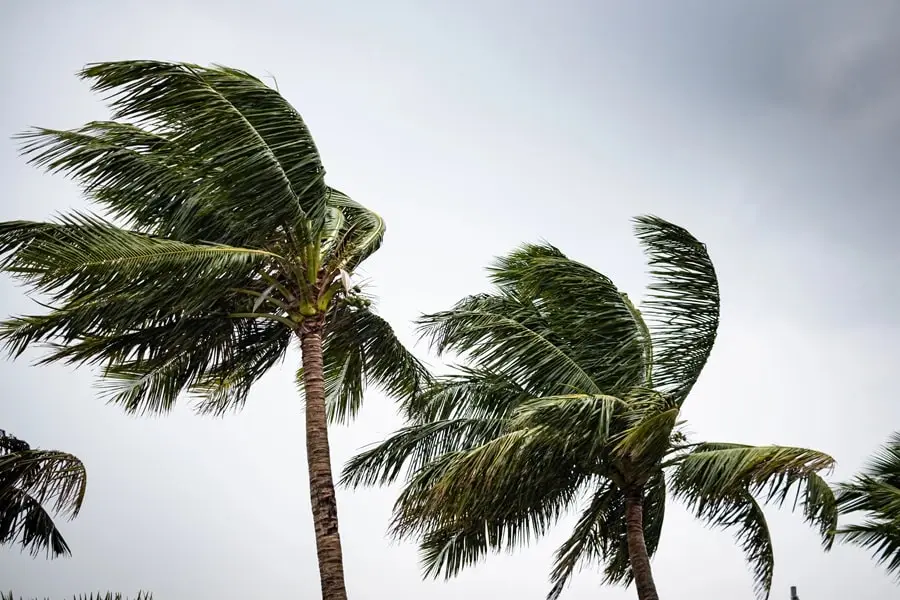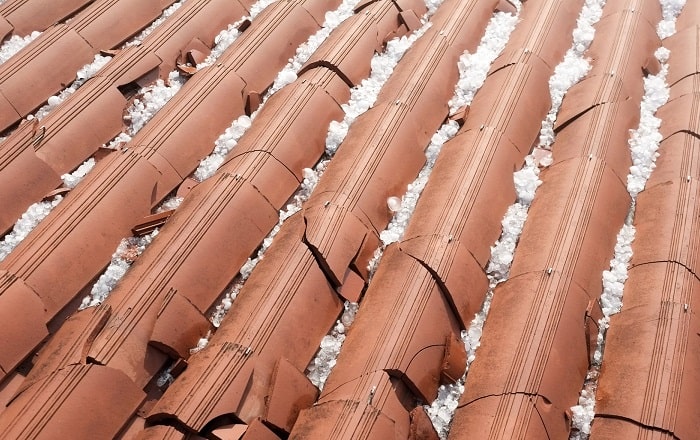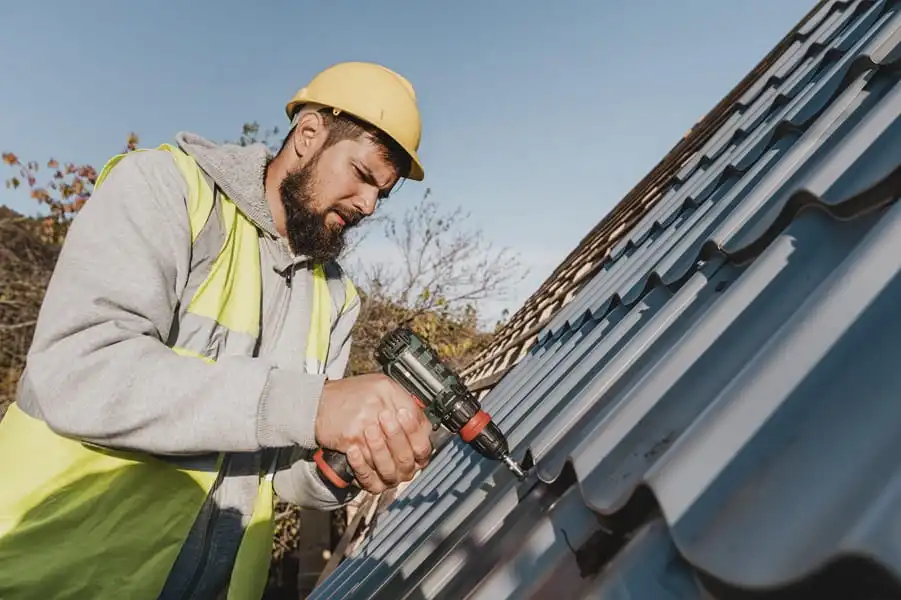Hail Damage vs. Wind Damage: How to Tell After a Tampa Storm
Not sure if your roof has hail or wind damage? Learn how to spot the difference after a Tampa storm. Affordable Roofing Systems...

After a Tampa storm, roof damage can be overwhelming, especially when you're not sure if it was hail or wind. At Affordable Roofing Systems, we understand how stressful this can be. Moreover, identifying the type of damage correctly is crucial for proper repairs. To help you with this, we've prepared a guide on how to tell the difference between hail and wind damage, and what to do next to get the right help with your storm damage roof restoration.
What Causes Roof Damage During Florida Storms?
Florida's severe weather can be intense and unpredictable, especially during hurricane season and the summer months when thunderstorms are common. High wind speeds, hail, flying debris, and falling tree branches can all take a serious toll on your roof, sometimes in just a matter of minutes.
Knowing what caused the damage is more than just curiosity—it helps determine how to handle insurance policy claims, what repairs are needed, and how urgent the situation is. In many cases, quick action is necessary. That’s why recognizing the source of damage is essential when considering emergency roof repair.
How to Spot Wind Damage on Your Roof
Strong winds can cause significant damage to your roof, often going unnoticed until leaks or other issues arise. Spotting wind damage early can prevent costly repairs and protect your home. Here’s what to look for:
- Missing, Curling, or Lifted Shingles - Look for bare patches or shingles that appear curled, cracked, or flapping in the wind.
- Granules in Gutters - Asphalt shingles are coated in granules to protect against UV rays. Wind damage may strip these away, leaving bald spots or granules collected in gutters and downspouts.
- Damaged Flashing or Roof Edges - Wind often targets roof edges and flashing first. Check for bent, dislodged, or missing metal strips around chimneys, vents, and roof valleys.
- Folded or Creased Shingles - A clear sign of wind stress is creased or folded roof shingles. This indicates that the shingle was lifted and may no longer seal properly.
- Interior Leaks or Stains - If wind has compromised your roof, you may notice leaks, water stains on ceilings or walls, or damp attic insulation after a storm.
- Debris Around the Property - Branches, leaves, or roofing materials, such as tiles or asphalt, on the ground can indicate wind damage. Inspect your roof for objects that may have caused impact damage or punctures.
- Loose Soffit or Fascia - Check around the roofline for sections of soffit or fascia that appear loose or are missing altogether due to high winds.
Pro Tip: While some signs are visible from the ground, a roof inspection by a professional roofer ensures nothing is overlooked. If you've experienced strong winds recently, it’s best to schedule a roof inspection—even if there are no immediate leaks.

How to Identify Hail Damage on a Roof
Hail impacts can cause both visible and hidden damage that weakens your Tampa roof over time. Even small hailstones can compromise shingle integrity, leading to future leaks or structural issues if left unaddressed. Here are some common signs of hail damage:
- Bruised Shingles – Soft, dark spots caused by the force of hail impact; they may feel spongy or give under pressure.
- Punctures or Cracks – Direct hits from larger hailstones can split or puncture shingles, exposing your roof to moisture.
- Granule Loss – The impact can knock protective granules off shingles, leaving bare spots and accelerating wear.
- Small Divots or Dents – Look for dents on shingles, metal roofs, gutters, or vents—these are telltale signs of hail strikes.
While some damage is visible from the ground, a professional inspection after a hailstorm is key to detecting hidden issues early.
Wind Damage vs. Hail Damage: Why It Matters
Understanding the difference between wind and hail damage is essential—not just for repairs, but also because home insurance claims and roof maintenance vary depending on the type of damage.
Insurance Claim Processes Differ
Insurance companies often treat wind and hail damage claims separately due to the distinct ways each affects your roof. Wind damage usually involves missing or lifted shingles, which might require immediate patching to prevent leaks. Hail damage, on the other hand, can be more subtle, such as granule loss or small punctures, that may not cause immediate leaks but can lead to premature roof aging. Communicating the correct damage type to your insurance company helps ensure timely and fair claim processing.
Materials Are Impacted Differently
Wind damage primarily tears or lifts roofing materials, making asphalt shingles and bitumen membranes vulnerable to being ripped off or loosened. Hail damage typically results in dents, cracks, and granule loss, which can weaken shingles and reduce their lifespan. Flat roofs are especially susceptible to hail damage because hailstones can cause pooling water to collect in small divots, increasing the risk of leaks and further structural damage over time.
Recognizing these differences allows for more targeted repairs and better long-term protection for your home.

What Happens If You Wait Too Long?
Delaying roof repairs after a storm can lead to serious and expensive problems. Even minor wind damage to roof shingles or subtle signs of hail damage can allow moisture to seep beneath the surface, causing long-term water damage, mold, and structural deterioration.
Once storm damage roof repair is delayed, the risk of roof leaks, rotting wood, and insulation failure increases, especially in Florida’s hot and humid climate. This can affect everything from your attic and ventilation to your ceiling and walls.
Many home insurance policies in Florida have strict timelines for filing a storm damage claim. Ignoring even minor damage may lead to:
- Claim denials or reduced payouts
- Voided roof warranty
- Full roof replacement if damage exceeds Florida’s 25% roof rule
- Higher repair costs from worsened leaks, mold, or roof deck damage
- Loss of home insurance coverage for future claims
Older roofing systems—especially those using asphalt shingles or bitumen—are especially vulnerable. Even a metal roof, while durable, can suffer panel lift, seam separation, or hail dents that go unnoticed until it’s too late.
Early roof restoration not only protects your home, but also helps secure your insurance coverage and avoid major out-of-pocket costs.
When to Call a Professional for Roof Inspection
After any significant storm—whether it brings strong winds, hail, or heavy rain—it’s important to have your roof inspected by a professional roofing contractor. Even if you don’t see obvious damage, small leaks or minor issues can worsen quickly and lead to costly repairs down the line.
Affordable Roofing Systems offers free, no-pressure roof inspections for Tampa homeowners. Our licensed roofing contractors can help you spot damage, handle insurance paperwork, and restore your roof with confidence.
Call (813) 542-8462 or Request a Free Estimate today.
